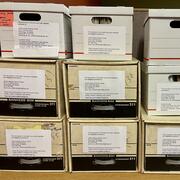Hazards
A major goal of the U.S. Geological Survey (USGS) is to reduce the vulnerability of the people and areas most at risk from natural hazards. Working with partners throughout all sectors of society, the USGS provides information, products, and knowledge to help build more resilient communities. Our objective science bolsters the economic health and well-being of Alaska and the Nation.






